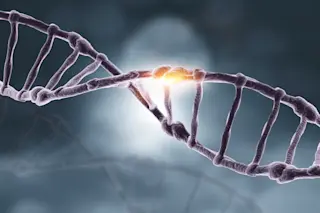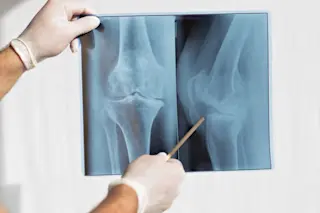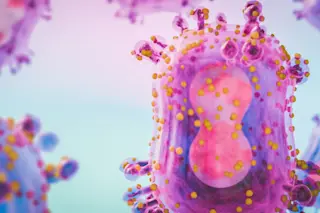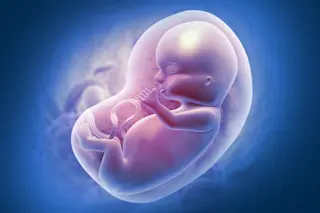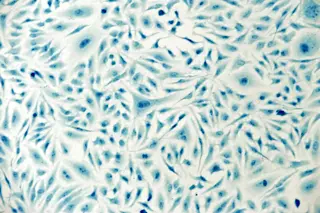“He was locked in the bathroom,” said the young woman.
“In the bathroom?” I echoed skeptically. “How’d he get there?”
“Last week he wasn’t feeling well and had trouble breathing. He didn’t come in Friday. I called over the weekend. No answer. He lives alone. When he didn’t come in today, I called the police.”
The cop at her side chimed in. “We had to break in. He wouldn’t come out.”
“Are you a relative?” I asked the young woman.
“No, just a friend. Will he be OK?”
“I expect so. Do you know his medical history? Any psychiatric problems? Drug use?”
“No. He’s a sweet, thoughtful person. Very smart. He manages our accounts.”
Throughout this exchange, my patient, a solidly built 30-year-old, sat quietly on the stretcher. I went to him.
“How are you, sir?”
“OK.” He stared straight ahead, looking more lost in thought than confused.
“Why were you in the bathroom, sir?”
“I went in to find . . . couldn’t . . .” He stopped.
“How long were you in there?”
“A day maybe. When . . . ?”
“Do you take medications?”
A pause. “No.”
“What is your birthday?”
“The month of November . . . day. Don’t.”
The young woman came over. “That’s not him. It’s not him at all.”
The patient wasn’t agitated or delirious, and the only physical abnormality appeared to be high blood pressure: 218/120. But his speech was like skywriting—the sentences started crisply, then dissipated.
When a patient’s brain isn’t working right, two diagnoses spring to mind: brain hemorrhage and meningitis. A quick CT scan and a spinal tap ruled both out. Other mind addlers include a sodium imbalance, excess calcium in the blood, and liver or kidney failure. He didn’t appear to have a history of those problems. And the drug screen wouldn’t be back for hours.
My patient sat impassively. He didn’t even look sick.
Then the lab called with the results of his blood test. “BUN, 125 milligrams per deciliter. Creatinine, 16.9.”
“What?” I sputtered.
The tech repeated the numbers.
“Good Lord.”
Blood urea nitrogen (BUN) and creatinine are waste products of protein metabolism (urea lends urine its name). Elevated counts on these two tests equal diminishing kidney function.
Old medical texts describe something called “uremic frost” in patients with kidney failure. In the days before dialysis was available to filter waste from the blood, the accumulation of nitrogen waste and acids led to a slow death. So much urea built up in patients’ blood that it leached out of their pores. The brain, like a candle in a bell jar, winked into a coma. Then each organ failed in succession.
I rubbed two fingers on the patient’s arm: no frost.
The kidneys, the Swiss Army knife of organs, are bewilderingly complex. Besides filtering waste and adjusting blood levels of electrolytes, acid, and water, they secrete one hormone that regulates blood pressure and another that stimulates the bone marrow to manufacture red blood cells. On top of that, the kidneys convert vitamin D to the form that intestines need to absorb calcium, and they manufacture glucose during times of starvation. They are also masters of hydraulics: Weighing just a quarter of a pound each, the two kidneys take in blood, remove water and waste products, and eliminate them as urine. They work nonstop, filtering the entire five-quart water content of blood every 45 minutes.
The crucial structure of the kidneys is the nephron, a microscopic tangle of capillaries and membranes. Each kidney packs a million nephrons. The first processing point within the nephron is the glomerulus, where an arteriole branches into a puffball of extraporous capillaries enclosed by a cheeseclothlike membrane. Water, along with small molecules such as sodium, glucose, and creatinine, passes out of the capillaries; blood cells and proteins remain behind. The soon-to-be urine passes into a tiny cupped tubule, thinner than the wispiest pipette. As the proto-urine flows, cells lining the tubules pump useful things like water, glucose, and sodium back into the blood vessels that run alongside, while excreting—and concentrating—creatinine, acids, and other undesirables into the growing urine stream. Other specialized cells sense when plasma flow or sodium concentration gets too low, then secrete renin to boost blood pressure and salt retention.
The kidneys’ capacity for indulging our excesses is astonishing. Vary your salt intake by a factor of 150 or your water consumption from a half quart to gallons a day, and your kidneys make the appropriate adjustments. Lose one whole kidney, and its partner picks up the slack. Lop off more, however, and a row of dominoes starts to tumble. Each nephron swells to meet demand. Filtration pressure builds. Beefing up their membranes to withstand the pressure, some nephrons then scar into uselessness. As some filtration units shut down, the remaining ones get hit harder, plunging the whole system into a tailspin.
I could only guess when his problems began. He’d shown no sign of high blood pressure at his last doctor visit two years ago. His sky-high blood pressure now might stem from the kidney tubules sensing less flow, then sending out distress signals to boost blood pressure. The best clue was his hematocrit, the percentage of blood made up of red cells, not plasma. A normal hematocrit is over 40; his was 26. His level of erythropoietin, the kidney’s bone-marrow stimulator, must have been low for months.
Now we had a diagnosis: brain malfunction caused by kidney failure. But what had caused that? After bringing his blood pressure down, we admitted him to the intensive care unit. Then the hunt began. An ultrasound showed no obstruction in either ureter, the channels that carry urine from each kidney to the bladder. He had no obvious deformity like polycystic kidneys, the most common inherited cause of renal failure. Nor were the kidneys shrunken, as in end-stage hypertension. His urine was uninfected. Blood tests showed no autoimmune diseases like lupus, which can attack the kidneys.
The next day he underwent dialysis, a procedure that passes blood through a machine using membranes and a physiological solution. Toxins like urea passively diffuse out of the bloodstream and into the dialysis fluid. That dropped his levels of blood urea nitrogen and creatinine by a third. As he had no obvious pathology, my hope was that gently increasing his fluids (had he forgotten to drink water during his bathroom lockup?) would bring his kidneys back.
We met again two days later.
“Do you remember me?” I asked.
“Oh, yes,” he said agreeably.
“My name?”
He smiled apologetically. His manner still had a slow-motion feel. “I’m sorry.”
“Today is Wednesday. How about last Saturday and Sunday?”
“The bathroom. I didn’t feel well Friday. Can’t remember.”
“Can you subtract 7 from 100 and keep going?” I asked.
He didn’t make it to 93.
The most worrisome new information was his family history—a brother had died of kidney failure. A few days later, another astonishing result came in: The patient was spilling 11 grams of protein per day in his urine. The normal amount is .2 gram. It made grim sense. Some inheritable mutations cause gradual damage to the cells that work on the tubule side of the glomerular filtration membrane. The hallmark of that filtering failure is the presence of enormous amounts of protein in the urine. His glomeruli, which had once been high-volume but selective sluice gates, had scarred.
A week after admission, with the patient’s creatinine stubbornly refusing to drop below 10, a surgeon inserted a large catheter with two ports into the man’s right internal jugular vein. He would need dialysis three times a week—indefinitely. His brother’s early demise, and the fact that the five-year survival rate for dialysis patients between ages 30 and 40 is just over 60 percent, did not bode well. Unfortunately, he has much too much company.
In 1973, when the federal government approved Medicare coverage for dialysis, 10,000 patients enrolled. By 2001 the number had ballooned to 292,000. In 2010 the number of dialysis patients will surpass 520,000. The greatest culprit is diabetes, although among African Americans hypertension plays a disproportionate role. Nationwide, 4 million to 5 million people have abnormal kidney function, yet fewer than half are aware of it. Early screening is vital because prompt treatment of diabetes and high blood pressure can slow the rate of deterioration.
A biopsy two weeks later proved that most of the patient’s nephrons were irreversibly scarred, probably due to the same genetic bad luck that felled his brother. Given that family history, more frequent checkups might have detected the problem earlier, and careful management may have prolonged his kidney function. But who knows? I hoped he would have luck finding a donor kidney. If not, people can survive for decades through dialysis. Either way, though, this young man’s life was unquestionably shortened.





